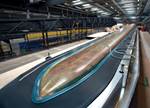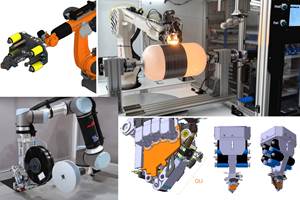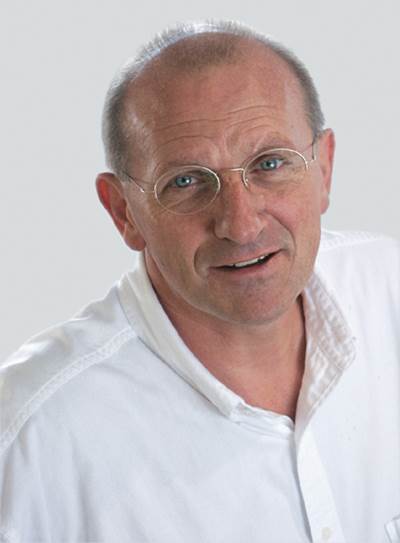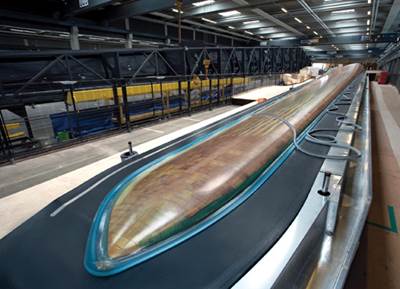Bye-bye black magic
Noting the great pressure to meet quality standards in a variety end-markets, CT editor-in-chief Jeff Sloan sees the composites community making a transition away from the old black magic to scientific process management.
I came to composites by way of the injection molding industry. Until about 15 years ago, there was a certain amount of “black magic” associated with that process. Certainly, the science of injection molding and polymer melt behavior had been well researched and reported, but the fact that much of the process occurs in a closed mold (out of sight) always imbued it with some uncertainty. On top of this, older injection molding machines were susceptible to hydraulic, mechanical and electrical degradation that could cause a mold to produce an in-spec part in one cycle, followed by an out-of-spec part the next. Because of this, some parts and machines required a fair amount of human supervision to keep process variables in check. Back in the mid-1990s, I visited a shop that was running several 1970s-vintage molding machines. According to the plant manager, these machines could “only be run by Ray on third shift because he is the only one who ‘knows’ these machines.” (I think I suggested that Ray’s health be closely monitored if so much was riding on his knowledge).
Around this same time, however, “scientific molding” started taking hold in injection molding. Engineers began to apply some basic fluid-dynamics knowledge to the process and, with the help of in-mold pressure transducers and other technologies, very quickly learned much about how melted thermoplastic resin behaves under high pressure in a closed cavity. The industry also began to understand how to keep certain machine/process parameters in spec. Within a few years the industry, on the whole, was producing higher quality parts at high speed.
The composites industry, it seems to me, is on the verge of a similar transition away from black magic to science-based consistency and repeatability. This transition is fueled, for the most part, by the dramatically expanding use of composites in a variety of high-profile but very demanding applications, ranging from commercial aircraft fuselages to wind blades. The pressure is on the composites community to conform to quality, performance, consistency and accountability standards that will require a more robust grasp of the manufacturing process. Andre Cocquyt touches on this in this issue's “Composites: Past, Present & Future” (see "The state of education ...." under Editor's Picks," at right), and links our need for production standards to our need for industry-wide education standards. And our story this issue on the use of core materials in wind blades ("Core for composites: Winds of change," under "Editor's Picks") highlights the wind industry’s demand not only for light weight, but also high-quality constructions that maximize the life, and minimize the maintenance, of composite blades.
The challenge this transition presents is substantial, however. Fabrication of composite structures is more complicated than the injection molding process. Composites present a bewildering number of variables in its vast range of resin systems, fibers and fiber forms, tooling materials and mold configurations, and manufacturing/curing/finishing processes. Understanding and controlling each variable within a certain sigma is a daunting task. It’s a challenge, however, that must be met if the composites community wants to continue to grow and offer meaningful solutions to the technical difficulties that manufacturers face today. We’re up to the task, I’m sure: This is a dynamic and creative problem-solving community. The next several years should be very interesting for all of us.
Related Content
Composites end markets: New space (2025)
Composite materials — with their unmatched strength-to-weight ratio, durability in extreme environments and design versatility — are at the heart of innovations in satellites, propulsion systems and lunar exploration vehicles, propelling the space economy toward a $1.8 trillion future.
Read MoreBladder-assisted compression molding derivative produces complex, autoclave-quality automotive parts
HP Composites’ AirPower technology enables high-rate CFRP roof production with 50% energy savings for the Maserati MC20.
Read MoreCombining multifunctional thermoplastic composites, additive manufacturing for next-gen airframe structures
The DOMMINIO project combines AFP with 3D printed gyroid cores, embedded SHM sensors and smart materials for induction-driven disassembly of parts at end of life.
Read MoreThe next evolution in AFP
Automated fiber placement develops into more compact, flexible, modular and digitized systems with multi-material and process capabilities.
Read MoreRead Next
The state of education in the composites trade, part I
Andre Cocquyt (GRPguru, Brunswick, Maine) renews his call to focus composites industry efforts on finishing and financing a comprehensive unitary composites education model at the national level.
Read MoreCore for composites: Winds of change
Core materials suppliers lean into the bracing breeze of big-blade challenges raised by the burgeoning wind energy industry.
Read MoreCutting 100 pounds, certification time for the X-59 nose cone
Swift Engineering used HyperX software to remove 100 pounds from 38-foot graphite/epoxy cored nose cone for X-59 supersonic aircraft.
Read More









